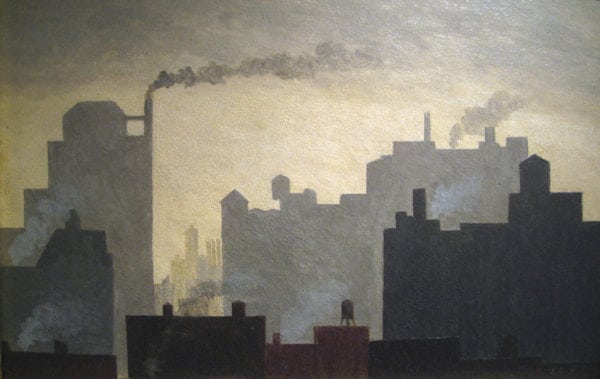In the early 1930s, Bruce briefly turned away from the portrayal of nature and focused his attention on the contemporary urban landscape. Akin to Charles Sheeler’s precisionist images of the mechanical age, his paintings celebrate the technological advancements embodied by America’s skyscrapers and bridges. In Untitled (New York), the artist strips the buildings that comprise the city’s skyline of their three-dimensionality and flattens them to pure silhouettes. In its geometricization of form, the composition emulates the machine and its multiple, rigid components; yet, the artist endows the work with a transcendent quality more characteristic of nineteenth-century landscapes. The resplendent light of the rising sun as it peaks over the immense man-made structures connects this painting to the other works in Bruce’s oeuvre. At the same time, the incredible subtlety of the artist’s muted palette and the matte surface of the painting evoke the intensely beautiful but economical still-lifes of Giorgio Morandi. Together, the novel arrangement of the forms in space and the harmonious color scheme create a compelling vision of early twentieth-century New York.

